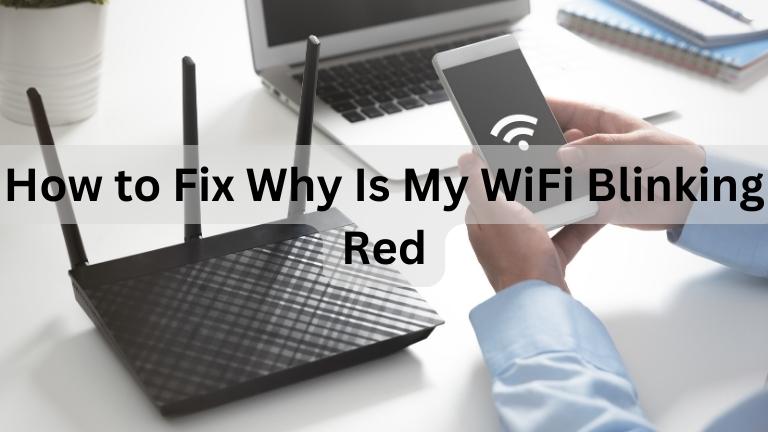
How to Fix Why Is My WiFi Blinking Red: A Complete Guide
When you’re trying to use your WiFi connection, the last thing you want to see is a red blinking light. However, this is a common issue that many people face, and there are several reasons why it can happen. In this article, we’ll take a look at some of the most common causes of a blinking red WiFi light and provide you with a step-by-step guide on how to fix the issue.
Contents
Check your Router and Modem
The first thing to do when you notice that your WiFi light is blinking red is to check your router and modem. Sometimes, the issue may be with your hardware rather than your WiFi network.
Here’s what you can do:
Step 1: Check the Power Supply
Make sure that your router and modem are receiving power. Check the cables and the power outlet to ensure that everything is connected properly.
Step 2: Restart Your Router and Modem
If your router or modem is not working correctly, restarting it may fix the issue. To do this, simply unplug the power cable from the back of the device and wait for 30 seconds before plugging it back in.
Step 3: Reset Your Router and Modem
If restarting your router and modem doesn’t work, you may need to reset them. This will erase all your settings and restore the devices to their default settings. To reset your router and modem, follow these steps:
- Find the reset button on the back of your router or modem.
- Press and hold the reset button for at least 15 seconds.
- Wait for the router or modem to restart.
Check Your WiFi Network
If your router and modem are working correctly, the issue may be with your WiFi network. Here’s what you can do:
Check Your WiFi Password
Ensure that you have entered the correct password for your WiFi network. Sometimes, the issue may be as simple as a wrong password.
Check Your WiFi Network Name (SSID)
Check the name of your WiFi network to ensure that it is the one you are trying to connect to. If you have multiple networks, make sure that you are connecting to the correct one.
Restart Your Devices
Sometimes, the issue may be with your device rather than your WiFi network. Restarting your device may fix the issue.
Move Closer to the Router
If you are too far away from your router, the WiFi signal may be weak. Move closer to the router to see if the issue is resolved.
Change Your WiFi Channel
Sometimes, there may be interference from other WiFi networks in your area. Changing your WiFi channel may fix the issue. To do this, follow these steps:
- Log in to your router’s admin panel.
- Find the WiFi settings.
- Change the channel to a less crowded one.
Check Your Internet Service Provider (ISP)
If none of the above steps work, the issue may be with your internet service provider (ISP). Here’s what you can do:
Contact Your ISP
Call your ISP and explain the issue. They may be able to resolve the problem remotely or send a technician to fix the issue.
Check for Firmware Updates
Another possible reason for a blinking red WiFi light is outdated firmware on your router or modem. Firmware is the software that controls your device’s hardware, and updates can improve its performance and fix issues.
Here’s what you can do:
Check for Firmware Updates
Check the manufacturer’s website for any available firmware updates for your router or modem. You may need to enter the model number of your device to find the appropriate update.
Update Your Firmware
Follow the manufacturer’s instructions for updating the firmware on your device. This may involve downloading the update to your computer and then uploading it to your router or modem.
Restart Your Router and Modem
After updating the firmware, restart your router and modem to ensure that the changes take effect.
Conclusion
A blinking red WiFi light can be frustrating, but there are several possible reasons why it may be happening. By following the steps in this guide, you can troubleshoot the issue and fix it quickly. Remember to check your hardware, WiFi network, ISP, and firmware to find the root cause of the problem. If you’re still having issues after trying these steps, contact your ISP for further assistance.
